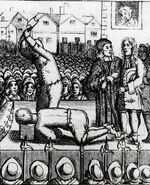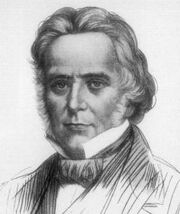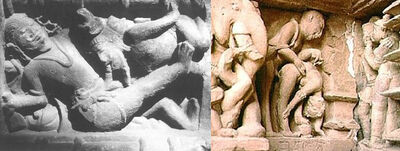Section 377 of the Penal Code of Singapore criminalises necrophilia. It states[1]:
"Sexual penetration of a corpse
377.—(1) Any man who penetrates, with his penis, the vagina, anus or mouth, as the case may be, of a human corpse, shall be guilty of an offence.
(2) A man who is guilty of an offence under subsection (1) shall be punished with imprisonment for a term which may extend to 5 years, or with fine, or with both.
(3) Any person (A) who causes any man (B) to penetrate with B’s penis, the vagina, anus or mouth, as the case may be, of a human corpse, shall be guilty of an offence if B did not consent to the penetration.
(4) A person who is guilty of an offence under subsection (3) shall be punished with imprisonment for a term which may extend to 20 years, and shall also be liable to fine or to caning."
This new version replaced the original Section 377 after a comprehensive review of the Singapore Penal Code in 2007.
Former Section 377[]
The former and original Section 377 was commonly known as the unnatural sex law. It criminalised penetrative sex (oral and anal) between two people regardless of gender if the act did not immediately lead to penile-vaginal intercourse which was consider the only form of "natural" sex as it had to potential of procreation.
The Penal Code (Chapter 224): Chapter XVI: Offences affecting the human body: Sexual offence: Section 377 stated that:
"Whoever voluntarily has carnal intercourse against the order of nature with any man, woman or animals, shall be punished with imprisonment for life, or with imprisonment for a term which may extend to 10 years, and shall also be liable to fine.
Explanation. Penetration is sufficient to constitute the carnal intercourse necessary to the offence described in this Section."
Ecclesiastical roots in Britain under Henry VIII[]

Henry VIII, the monarch who enacted Britain's anti-sodomy laws.
An exhaustive analysis of the origin of British laws which sought to prohibit buggery and their evolution into Section 377 is found in an academic paper by Prof. Douglas Sanders (see archive of the paper: 377 and the unnatural afterlife of British colonialism).
Prosecution by the Catholic Church[]
Prior to the enactment of the first civil anti-buggery law in Britain in 1533, the offences of buggery or sodomy had been dealt with by the Catholic Church. In its early medieval years, these acts were given no particular penance - they were viewed like all the other sins[2]. It is unlikely that people were brought up to the ecclesiastical courts for homosexual behavior alone. They were usually charged for publicly standing up against the Church for its norms which looked down upon homosexuality. If they refused to back down from their "heresy", they were severely punished. The usual punishment for convicted heretics was death by burning at the stake.
The Buggery Act[]
The Buggery Act 1533, formally An Acte for the punysshement of the vice of Buggerie, was an Act of the Parliament of England piloted by Henry VIII's chief minister, Thomas Cromwell.
The Act prescribed death as the punishment for buggery with man or beast. Some have suggested that bestiality was specifically included because of the fear of hybrid births!
The wording used in the Buggery Act, which included "abominable" (taken from Leviticus in the Bible), in addition to "buggery" (which, by the 13th century, had become associated with sodomy and was later defined by the courts to include only anal penetration and bestiality) and "vice", confirms its religious character.
The Buggery Act 1533 stated that:
"Forasmuch as there is not yet sufficient and condign punishment appointed and limited by the due course of the Laws of this Realm for the detestable and abominable Vice of Buggery committed with mankind of beast: It may therefore please the King's Highness with the assent of the Lords Spiritual and the Commons of this present parliament assembled, that it may be enacted by the authority of the same, that the same offence be from henceforth ajudged Felony and that such an order and form of process therein to be used against the offenders as in cases of felony at the Common law. And that the offenders being herof convict by verdict confession or outlawry shall suffer such pains of death and losses and penalties of their good chattels debts lands tenements and hereditaments as felons do according to the Common Laws of this Realme. And that no person offending in any such offence shall be admitted to his Clergy, And that Justices of the Peace shall have power and authority within the limits of their commissions and Jurisdictions to hear and determine the said offence, as they do in the cases of other felonies. This Act to endure till the last day of the next Parliament."

Walter Hungerford was the first man to be executed under the Buggery Act.
This meant that a convicted sodomite’s possessions could be confiscated by the government, rather than going to their next of kin, and that even priests and monks could be executed for the offence - ironic, in view of the fact that priests and monks could not be executed even for murder. Henry later used the law to exterminate monks and nuns (thanks to information his spies had gathered) and take their monastery lands. The same tactics had been used 200 years before by Philip IV of France against the Knights Templar.
The Buggery Act was formulated in the context of Henry VIII's engineered break from papal authority to establish the Anglican church. It aimed to justify the seizure of the Catholic monasteries and the confiscation of their other rich properties. The pretext was the alleged sexual immorality of those in the religious vocation. Without this anti-Catholic agenda, it seems unlikely that the Act would have been enacted.[3]
In July 1540, contravention of the Act, along with treason, resulted in the first conviction. Walter Hungerford, 1st Baron Hungerford of Heytesbury, became the first person executed under the statute, although it was probably the treason that cost him his life. Being a nobleman, he was beheaded at Tower Hill, an elevated spot northwest of the Tower of London (commoners were hung at another public execution site, Tyburn). Ironically, Thomas Cromwell, the man who introduced the Buggery Act to parliament, was also beheaded there the very same day, on 28th July, after he fell out of favour with Henry VIII. Nicholas Udall, a cleric, playwright and headmaster of Eton College, was the first to be charged for violation of the Act alone, in 1541. In his case the sentence was commuted to imprisonment, and he was released in less than a year.
Offences against the Person Act & Criminal Law (India) Act[]
The Buggery Act remained in force until its repeal in 1828. It was replaced by Section 15 of the Offences against the Person Act 1828, and Section 63 of the Criminal Law (India) Act 1828, which provided that buggery would continue to be a capital offence.
Buggery remained a capital offence in England and Wales until the enactment of the Offences against the Person Act 1861. The last execution for the crime took place in 1836.
Codification of law, particularly criminal law, became a major reform project in Britain in the 19th century, pushed by Jeremy Bentham and the utilitarians. Codes were well suited to British colonialism, providing a single, orderly written version of areas of law. This made them easy to enact in a colony.
The Indian Penal Code[]

Lord Thomas Macaulay.
In the early years of British colonialism in the East, the British government enacted several Indian Charter Acts which gave the East India Company exclusive rights of trade and commerce in India and subsequently, also the right to rule its largest colony. Amongst these was the Charter Act of 1833 which introduced legislative centralisation in India and extended the tenure of the commercial grant of the company for another 20 years. The Charter Act of 1833 required the appointment of a Law Commission to consolidate, codify and improve Indian laws. Lord Thomas Macaulay was appointed president of that commission in 1835. He drafted the Indian Penal Code with the help of many experienced lawyers to replace Hindu criminal law. The latter was based on the Manusmriti, generally known in English as the Laws of Manu or Dharmic discourse to Vedic rishis on the "way of living" for various classes of society, and had hitherto held sway in the greater part of India. The Indian Penal Code was incorporated by the British colonial administration in the late 1850s.

Hindu temple sculptures in Khajuraho depicting homosexual sex.
Macaulay's draft included a Section 377, a statute based on English criminal law which sought to prohibit "buggery" or sodomy, largely taken to mean anal sex between men. Under Hindu law, consensual sex between adult males was never an offence. The classic Indian text, Kama Sutra, also dealt without ambiguity or hypocrisy with all aspects of sexual life including marriage, adultery, prostitution, group sex, sadomasochism, male and female homosexuality, and transvestism. In the new Indian Penal Code, however, Section 377 criminalised "carnal intercourse against the order of nature". The latter phrase was a new legal concoction, not previously found in British law. It was derived from words attributed to, amongst others, Thomas Aquinas and Sir William Blackstone. A fine and/or up to 10 years' imprisonment were specified for these activities. It is of interest to note that Lord Macaulay never married and his closest companion was his sister Hannah.[4] (For a detailed history of Macaulay's enactment of India's Section 377, see archive of the academic paper, "Section 377 and the dignity of Indian homosexuals" by Alok Gupta).
Colonial diffusion[]
Section 377 became effective as part of the British-imposed Indian Penal Code from January 1, 1862, and was adopted by the colonial masters, also as Section 377 into the Straits Settlements Penal Code in 1871. The cloned and transplanted law came into operation in the Straits Settlements of Singapore, Penang and Malacca on September 16, 1872.
Similarly worded legislation, also under the same numbered section of each country's penal code, that is, "377", as if it were a trademark, was introduced by the British into their other Asian colonies such as India, Pakistan, Hong Kong, Malaya (now Malaysia), Brunei and Burma (now Myanmar) in the late 19th century.
Sri Lanka, the Seychelles and Papua New Guinea have the key wording from India's Section 377, but different article numbers. Parallel wording appears in the criminal laws of many of the former colonies in Africa.[5]
Section 377A (Outrages on decency) was added to the sub-title "Unnatural offences" in the Straits Settlements Penal Code in 1938. Both Sections were absorbed unchanged into the Singapore Penal Code when the latter was passed by Singapore's Legislative Council on January 28, 1955.
Scope[]
The original Section 377 (repealed in October 2007)[]
Unnatural sex or sodomy was not defined in the Indian Penal Code drafted by the British. Legal records show that Indian legislators in the 19th and early 20th centuries interpreted "carnal intercourse against the order of nature" between individuals (of all sexes - the law being non-gender specific with its use of the word "whoever") to include anal sex, bestiality and, often after much courtroom deliberation, oral sex as well, namely, any form of sexual intercourse which did not have the potential for procreation.
Therefore, both heterosexual and homosexual oral and anal sex were criminal offences. In this respect, Section 377 did not discriminate against homosexuals. However, early cases tried in India mainly involved forced fellatio with unwilling male children and one unusual case in 1934, Khandu vs. Emperor, of sexual intercourse with the nostril of a buffalo[6],[7].
Theoretically, even lesbian sex which involved penetration, eg. of a finger, tongue or sex toy into the vagina or anus, would be covered under the law, although there are no records of any judge in India or Britain's numerous other colonies interpreting the law to include sex between women.
In the Singaporean context, recent cases had established that heterosexual fellatio was exempted if indulged in as foreplay which eventually leads to coitus. The Singaporean margin note of the original Section 377 further explained that mere penetration of the penis into the anus or mouth even without orgasm would constitute the offence. The law applied regardless of the act being consensual between both parties and done in private.
Owing to overwhelming public support and the realisation by the politico-legal system that the statute was no longer relevant to contemporary society, Section 377 was repealed in October 2007 during the extensive review of the Singapore Penal Code. A new Section 377, which criminalises sex with dead bodies ("Sexual penetration of a corpse")[8], was substituted in its place.
The Anis Abdullah case[]
- Main article: Anis Abdullah case

Minister of State for Home Affairs in 2004, Ho Peng Kee.
The movement to repeal Singapore's original Section 377 was galvanised by the Anis Abdullah case. In November 2003, police constable Anis Abdullah was found guilty of oral sex with a 16-year-old girl and sentenced to 2 years' jail. Although it was consensual, he was charged under the former Section 377[9]. Many letters were written to the press, shocked that in this day and age, consensual oral sex was still a criminal offence.
In response to the public outcry, the Ministry of Home Affairs said that they were reviewing this aspect of the law. In January 2004, the Minister of State for Home Affairs, Ho Peng Kee reiterated in Parliament that the decriminalisation of oral sex was under review, but only for heterosexuals.
Penal Code review[]
In 2006, the Ministry of Home Affairs announced that it would be carrying out an extensive review of the entire Singapore Penal Code, the first in 22 years. The exercise took over a year and gathered extensive feedback from the public via the press, the Internet and live forums.
Section 377 was repealed and replaced by a new Section 377 which criminalised necrophilia.
Section 377A left intact[]
The gay community had initially hoped that the Government would repeal both Section 377 and Section 377A which criminalises non-penetrative sex specifically between men. However, the status quo on the gay sex law was maintained.
A Home Affairs Ministry spokesman said that this acknowledged Singapore as 'a generally conservative society', though the Government would not actively prosecute people under that section of the law.
The effect of decriminalising oral and anal sex for heterosexual couples but not for male homosexual ones was to enshrine discrimination against gay Singaporeans in the law.
This led to a campaign to repeal the statute which saw the drafting of an Open Letter to the Prime Minister to repeal Section 377A and a Parliamentary petition to repeal Section 377A in October 2007.
See also[]
References[]
Acknowledgements[]
This article was written by Roy Tan.